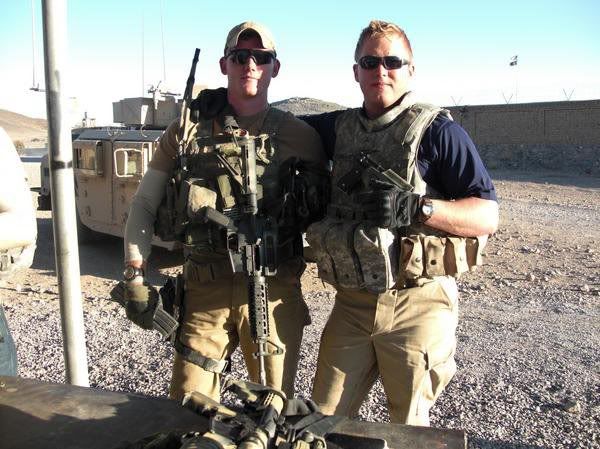I am going to open by saying that I am, on my best day, an intermediate handgunner. The more I learn about the dynamics of self defense with a handgun, the less I seem to know. It has become a love affair, though. When I was deployed, I carried a beretta, but to me it was just another item I had to sign for that if I lost, I was in hot water. When you sit behind an M2 browning, a 240B on an eagle mount, with a mossberg 500 and an M4 with M203 in the turret with you all day, the pistol in your chest rig kind of seems like an afterthought. I didn't even carry a spare magazine.
![Image]()
You'd be amazed how much food gets on your gun when you wear it on your chest like that. Looks cool though.
When I came back, I got hired by the Rock Island Arsenal Police Dept. and suddenly, the beretta M9 was my primary weapon system. Thus began my self-study of combat handgunnery, that will likely be a lifelong journey.
That being said, some time ago, I read an article by Massad Ayoob about the placing of shots into the pelvic girdle of an attacker to achieve immediate incapacitation. I wish I could link it, because Mr. Ayoob deserves all the credit in the world for his amazing work in the field of handgun tactics techniques and procedures. I haven't been able to find it. If anyone can, I would definately appreciate it.
The theory behind this tactic makes sense. If you crack the pelvis, you will render your attacker physically unable to stand. I have read that injuries of this nature often cause debilitating pain as well. The pelvis is bigger and less mobile than the head, making it an easier target to hit when you need to stop the bad guy, and shooting him in the thorax didn't quite work out. This might be a useful drill to run if you have a smaller caliber pistol, for whatever reason prefer to shoot FMJ ammo (might be all you have, or maybe the only kind of projectile your weapon will cycle reliably)
I took the time to try this out on the range, using a lifesize combat target (the type that has an actual picture with a scowling guy holding a pistol) using a modified "failure drill". Upon drawing, I would open with a controlled pair to the center of mass, then transition to the pelvis and fire a three shot group. I found this to be faster than the standard "two the chest, one to the head" technique, and to have a wider margain for error.
This might not be THE way, but it is definitely A way. I think that as a practical self defense tactic, it holds water.

You'd be amazed how much food gets on your gun when you wear it on your chest like that. Looks cool though.
When I came back, I got hired by the Rock Island Arsenal Police Dept. and suddenly, the beretta M9 was my primary weapon system. Thus began my self-study of combat handgunnery, that will likely be a lifelong journey.
That being said, some time ago, I read an article by Massad Ayoob about the placing of shots into the pelvic girdle of an attacker to achieve immediate incapacitation. I wish I could link it, because Mr. Ayoob deserves all the credit in the world for his amazing work in the field of handgun tactics techniques and procedures. I haven't been able to find it. If anyone can, I would definately appreciate it.
The theory behind this tactic makes sense. If you crack the pelvis, you will render your attacker physically unable to stand. I have read that injuries of this nature often cause debilitating pain as well. The pelvis is bigger and less mobile than the head, making it an easier target to hit when you need to stop the bad guy, and shooting him in the thorax didn't quite work out. This might be a useful drill to run if you have a smaller caliber pistol, for whatever reason prefer to shoot FMJ ammo (might be all you have, or maybe the only kind of projectile your weapon will cycle reliably)
I took the time to try this out on the range, using a lifesize combat target (the type that has an actual picture with a scowling guy holding a pistol) using a modified "failure drill". Upon drawing, I would open with a controlled pair to the center of mass, then transition to the pelvis and fire a three shot group. I found this to be faster than the standard "two the chest, one to the head" technique, and to have a wider margain for error.
This might not be THE way, but it is definitely A way. I think that as a practical self defense tactic, it holds water.





